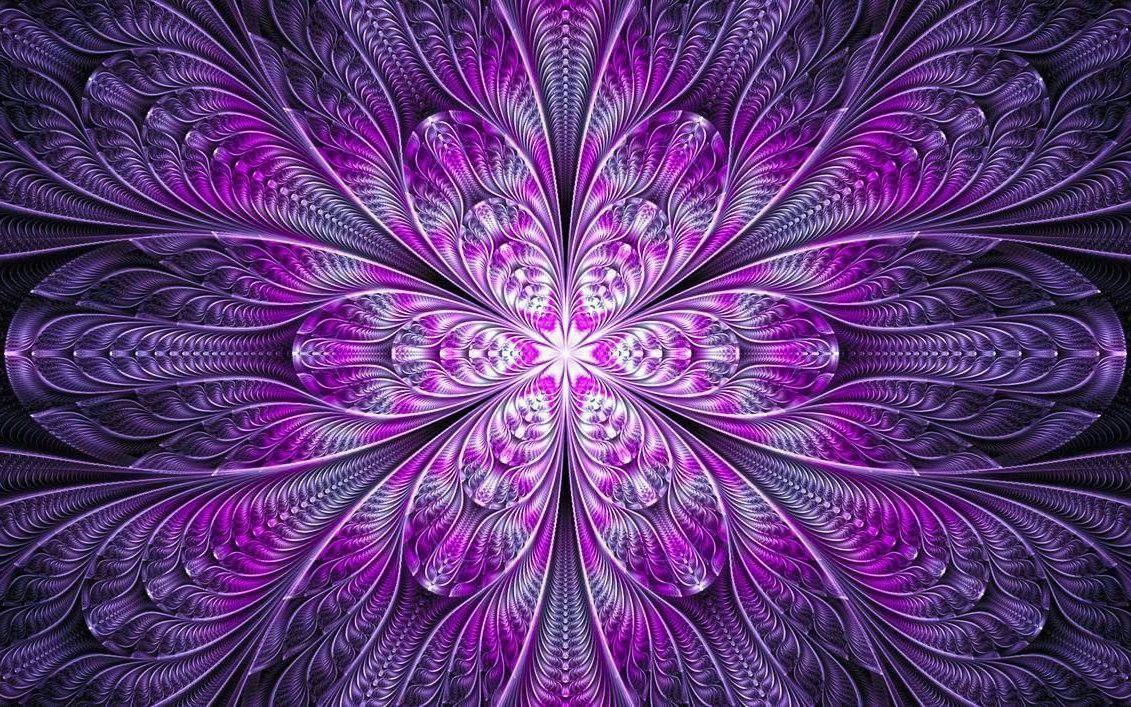1.- The sixth Chakra Ajna: the center of mental power
1.1.- What defines the powerful Ajna Chakra?
Ajna Chakra is the crossing point where the three main nadis (ida, pingala and sushumna) merge in a process of consciousness, flowing to Sahásrara.
When the mind concentrates on the union of these three forces, the transformation of individual consciousness. The individual conscience is mainly composed of the ego: as long as there is duality there can be no Samadhi. As long as one remembers of itself, it is impossible to connect with our Higher Consciousness.
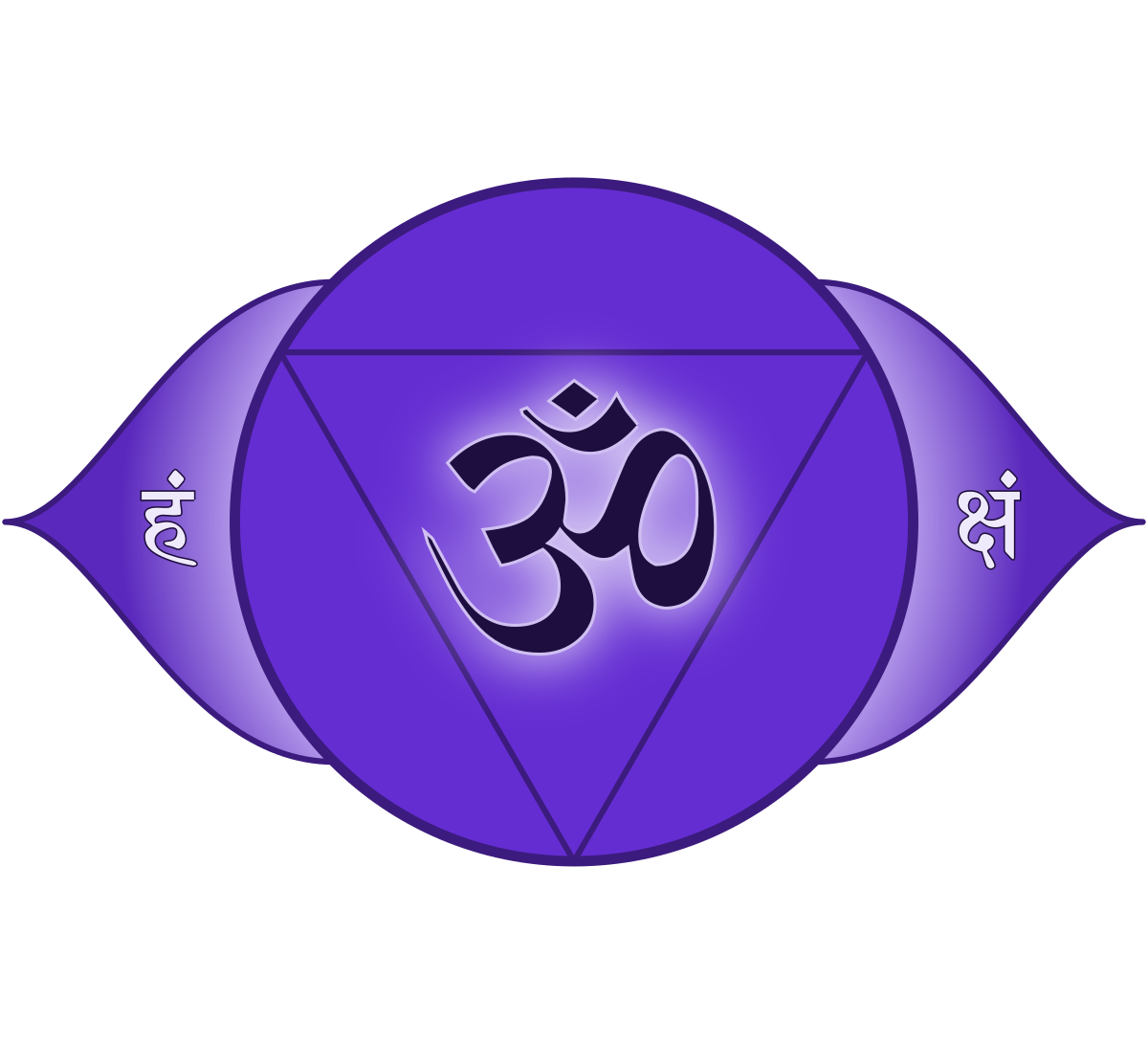
When Ida and Pingala nadis unite with Sushumna at Ajna Chakra, one completely forgets oneself. What happens is that consciousness expands and becomes uniform. The individual consciousness dissolves, and ends up transcending the dual world.

Ajna Chakra is where we can finally purify our mind
With the mind purified, one can proceed with the experience and awakening of the other Chakras.
During the practice necessary to activate this Chakra, we recommend using a suitable incese like this one that we offer in our online store.
1.2.- Etymology of the sixth Chakra Ajna
1.2.1.- sanskrit root of Ājñā Chakra
The word Ājñā comes from the sanskrit root meaning “know, obey, follow”. Ājñā means command, or control center. In astrology, Ajna is the center of Jupiter, which symbolizes the Guru. Therefore, this center is also known as the “Guru Chakra“.

1.2.2.- The sixth Chakra Ajna is traditionally known as the third eye
Ajna is the gateway that connects the guru with the disciples. It symbolizes the level at which it is possible to direct mind-to-mind communication between people.
And it is here that the indications of the internal Guru are heard in the deepest state of meditation, when all the sense modalities are separated and one enters the state of Shunya or emptiness. Shunya is a circumstance of absolute nothingness, where the empirical experiences of name and form, subject or object do not penetrate.

It is identified as a psychic eye located in the middle of the two physical eyes, and looks inward, rather than outward.
Of course, if you are new to the spiritual life, you will not face this problem yet, but when you do arrive, it will be a difficult subject to deal with. At the moment maybe your problems are only mental.
It is called “the eye of intuition”, and it is the door through which the individual enters the astral and psychic dimensions of Consciousness. Perhaps the most common name for this Chakra is “the third eye“, and mystical traditions of all times and cultures make abundant references to it.
The most common name of Ajna Chakra is “the third eye“
2.- The channel of the sixth Ajna Chakra
2.1.- The revelation of existence
Ajna Chakra is the bridge through which the underlying nature of existence is revealed to us. It is also called “the eye of Shiva” as Shiva is the symbol of meditation, which is directly affiliated with the awakening of Ajna Chakra.
It is attractive to know that Ajna Chakra is more active in women than in men. In general, women are more sensitive, psychic and perceptive. However, in many people this third eye remains closed, and although they perceive the events of the outside world, they cannot obtain the knowledge and understanding of the absolute truth. In this sense we are blind to the real possibilities of the world, unable to perceive the deepest levels of existence.

2.2.- The location point of the Ajna Chakra
Ajna Chakra is located inside the brain, in the pineal gland. Because it is very difficult to feel it, we will concentrate on its Kshetram or reflex point which is Bhrumadhya, between the eyebrows. Ajna and this point are directly connected. This is the meaning of the Indian custom of putting Tilaka, Sandalwood or Kumkum between the eyebrows. Although the real purpose is to stimulate the Chakra, as a means of focusing our attention, consciously and unconsciously, on the Ajna Chakra.
Through various yoga practices, such as Trataka and Shambavi Mudra, it is possible to regenerate and maintain the health of the pineal gland.
3.- The traditional symbology of the sixth Ajna Chakra
3.1.- The petals of Ajna Chakra
Ajna is depicted as a two-petaled lotus. It is a pale, light gray color, like that of a rainy day. Others comment that it is white like the Moon, or silver, but in fact it is an impalpable color. On the left petal is the letter or HAM and on the right the letter KSHAM.
They are the Bija Mantras of Shiva and Shakti. One presents the moon or Ida Nadi, and the other the sun or Pingala Nadi. Beneath the Chakra the three Nadis merge: Ida on the left, Pingala on the right and Sushumna on the center.

3.2.- Symbols and our attributes
Inside the lotus there is a circle that symbolizes Shunya, the void. Inside the circle is an inverted triangle that represents Shakti: creativity and manifestation. Above the triangle there is a black Shivalingam. The Shivalingam is a symbol of our astral body.
According to tantra and the occult sciences, the astral body is the attribute that shapes our personality. In this way, the shape of the Shivalingam can have one of three colors, depending on the purification or evolution of consciousness.
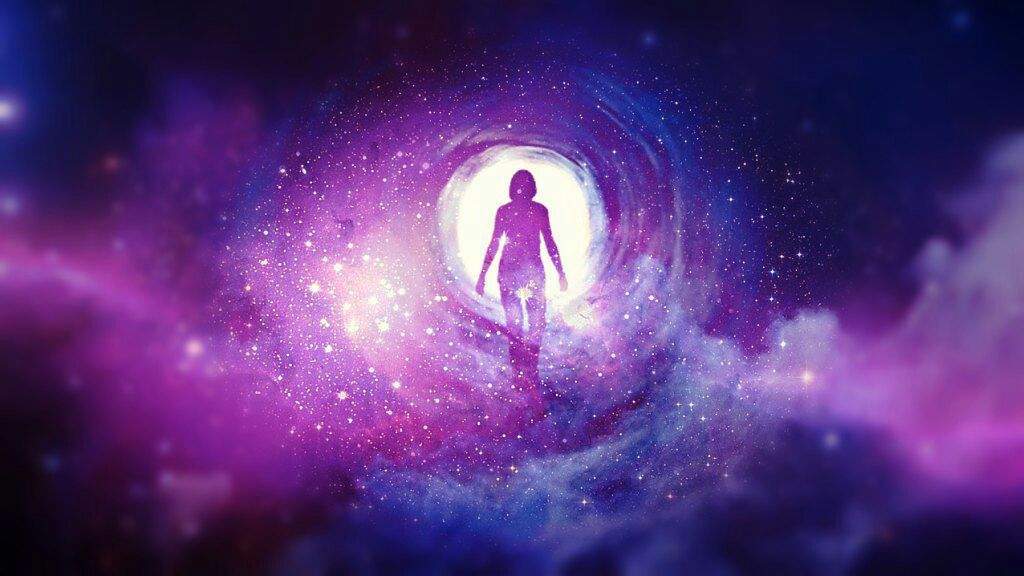
In Muladhara the Shivalingam is greyish and ill defined; it can be compared to our state of consciousness when we live an instinctive life, we have no real concept of ourselves, or what we are.
In Ajna Chakra the Shivalingam is black with a very defined outline. Here consciousness is defined and great psychic abilities can be awakened.
3.3.- The Shivalingam and traditional symbols
Above the Shivalingam is the traditional symbol of Om, with the crescent moon, the Bindu and its tail on top. “Om” is the Bija Mantra and the symbol of the Ajna Chakra, and in its form the trace of Consciousness is seen in sound.
Often the experience one has when awakening occurs is similar to that induced by Ganja (Marijuana).
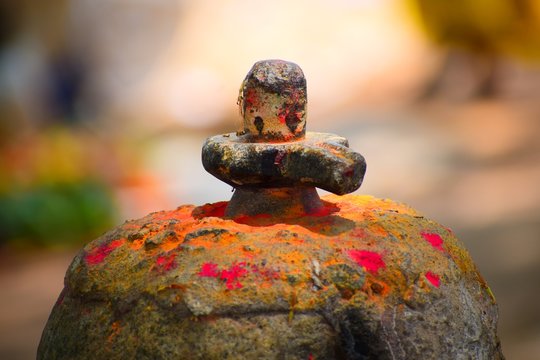
By numbing the sixth Ajna Chakra you are able to enter the body of another according to your will and become the most outstanding among the Munis, being Omniscient and seeing everything. You become protective of all and know the Shastras intuitively. You realize unity with Brahman and get Siddhis (powers). Meditating on this center, they get the different results from meditation on the other Chakras.
4.- The sixth Chakra Ajna and the mind
The sixth Ajna Chakra is essentially the Chakra of clear mind, and prefigures the highest level of Consciousness: Ajna Chakra is always activated. If you know something without using your senses, that intuition means that Ajna is working.
When Ajna is awakened, the unfocusedness of the individual mind is dispersed and the Buddhi purified it is noticeable. Attachment, which is the cause of ignorance and high relegation, disappears, and Sankalpa Shakti becomes solid. When Ajna is activated, the lack of focus of the individual mind is dispersed and the purified Buddhi becomes perceptible. Attachment, which is the cause of ignorance, disappears, and Sankalpa Shakti becomes very intense.
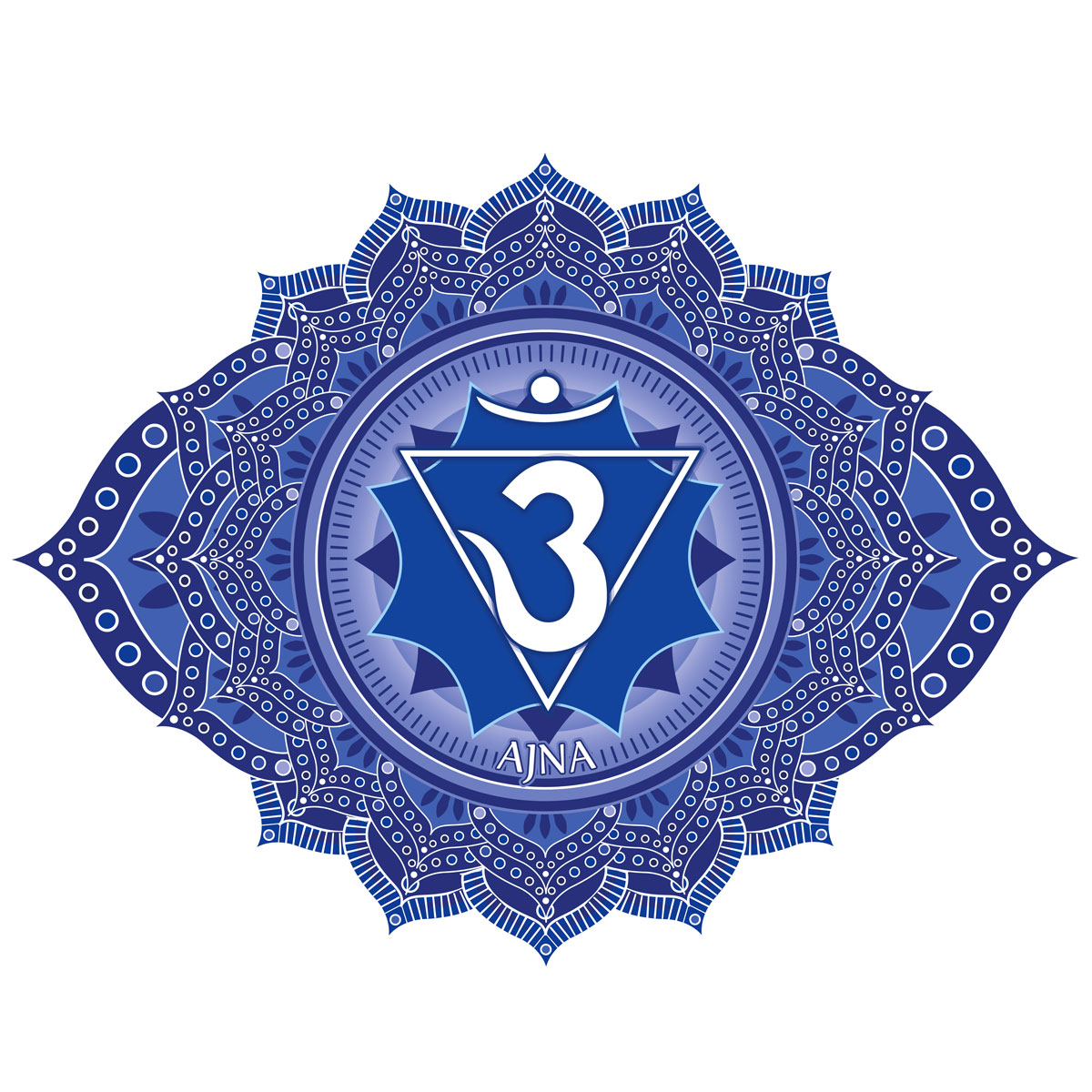
Ajna is the center where one becomes the detached observer of what happens, including everything that happens inside the body and the mind. Here our Higher Consciousness develops, and the vision of our hidden essence.
When Ajna awakens, the meaning and relevance of the symbols are perceived in flashes of conscious awareness.
In the plane of extrasensory perception, the different Siddhis appear according to the Samskaras or their own mental tendencies. For this reason, Ajna is said to resemble a knot above the spine.
5.- Understand cause and effect of the sixth Ajna Chakra
5.1.- Curiosities of Ajna Chakra
Until the Ajna Chakra is not awakened, we are chained to our own illusions, see reality distorted, and suffer from misunderstandings regarding attachment, love, hate, jealousy, loss, and many other emotions.
Fears do not have a solid foundation, just like our jealousy and our attachments, but despite all we suffer them.

The mind works within a limited sphere and we cannot transcend it. When Ajna wakes up, there is a process of awakening from the current dream, in which we are living, and thus we can finally understand the relationship between cause and effect.
5.2.- Cause and effect
It is necessary to understand the law of cause and effect with correspondence to our lives; Otherwise, with the different emotional stages of life we get depressed and sad.
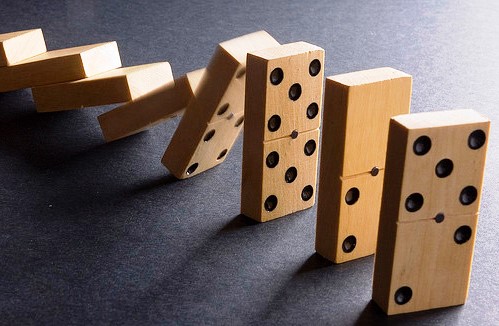
Each and every action is both a cause and an effect. This life we have is an effect, but we have to discover and understand the relationship between cause and effect.
If we understand this relationship, no event in life will adversely affect us, and the different objects and experiences that appear in our lives, and that disappear from them, do not affect us. One participates in all the affairs of life and lives, but as a detached witness. Life flows like a swift current, and you surrender and move with it.
6.- The connection of Ajna on the different Asanas and Chakras
6.1.- The passage from the sixth Chakra Ajna to Sahasrara
Ajna Chakra requires Sadhana, discipline, perseverance and steady effort. Our mental state makes it impossible to recognize how to attain Sahasrara, but with active Ajna a higher perception develops, and one understands how to attain Sahasrara.
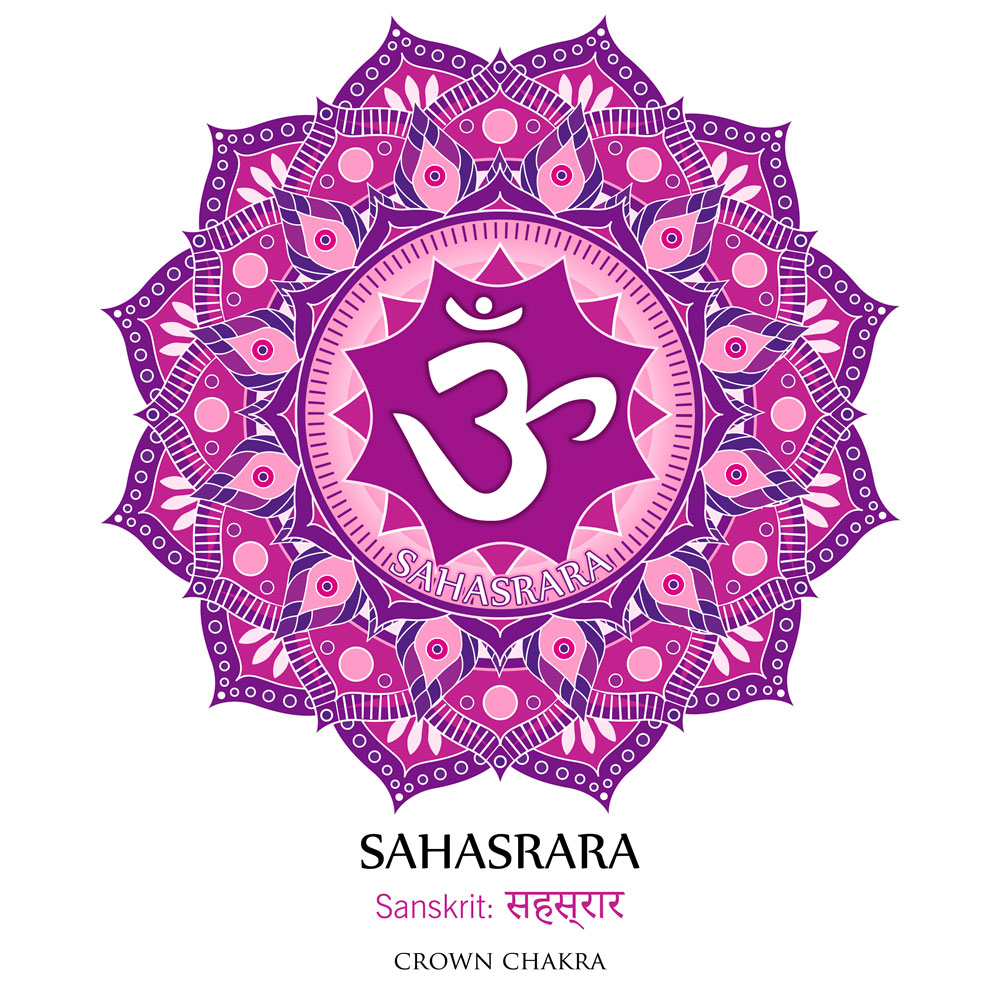
6.2.- Connection between the Ajna and Muladhara Chakras
The Ajna and Muladhara chakras are closely related. The activation of one helps to awaken the other.
Asanas to activate Ajna
Yoga Mudra (symbol of yoga)
Padahastasana (The Stork)
Viparita Karani (inverted posture)
6.3.- Tantric Sadhana: Preparatory practices
It is recommended to practice Jala and/or Sutra Neti (flushing out mucus with water), for a few months, to purge the nasal area and the important nerve fork behind this area. This will help to bring awareness and awaken Ajna Chakra. Practice every morning before starting the Sadhana.
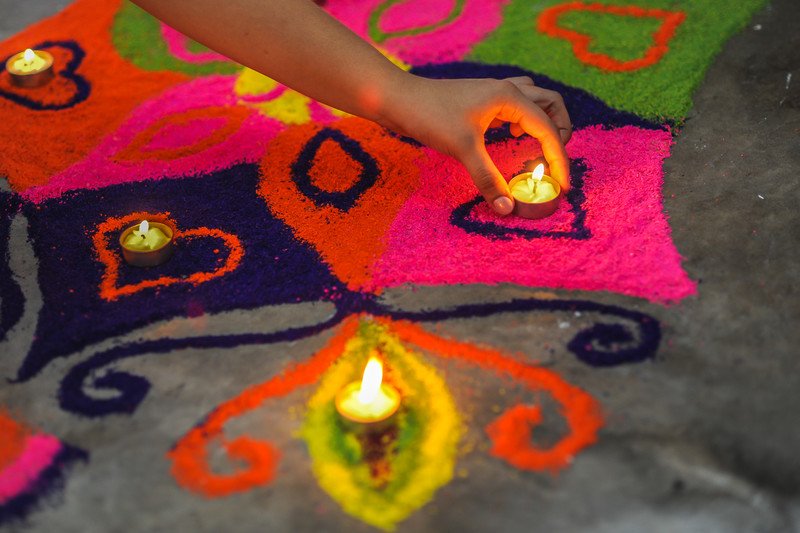
7.- Awaken the sixth Chakra Ajna in different ways
Direct manifestation in Ajna Chakra is very difficult and for this reason, in tantra and yoga, the point in the middle of the eyebrows is used to awaken this Chakra. This point is called Bhrumadhya, and it is between the two eyebrows, in the place where the women of India put a red point and the Brahmins put a point of sandalwood paste. This point between the eyebrows can be encouraged and awakened with many different techniques. The following practices are done daily for a month.
You can also favor its activation through this incense that we offer you on our website.

7.1.- Pranayama and breathing
ANULOMA VILOMA PRANAYAMA with PRANA SHUDDHI.
To awaken Ajna with the direct concentration of energy in the Nadis; Ida and Pingala.
POSTURE: Sitting, comfortable meditation posture, spine straight but not tense, body relaxed. The body must be absolutely still.
Then begin to develop awareness of the breath in the nostrils. When you inhale, all of your awareness should flow with the breath from the tip of the nose to the point between the eyebrows. When you exhale, from between the eyebrows to the tip of the nose.

Take understanding of the triangular shape of breathing between the nostrils and between the eyebrows. The base of the triangle is at the level of the upper lip, its sides are the left and right nasal passages, and its apex is within the point between the eyebrows. Keep your attention on the triangular shape of this breath.
7.2.- Anuloma Viloma and Prana Shuddhi
When this awareness of breathing has been stipulated, begin to consciously alternate the flow of air between the two nostrils, in the same way as in Nadi Sodhana, with the difference that now you practice it mentally or psychically, without hands.
Consciously breathe in through the left nostril to Bhrumadhya and exhale through the right nostril. Then inhale through the right nostril to Bhrumadhya and exhale through the left. This is a round of Anuloma Viloma, or mental Nadi Sodhana.

Inhale and exhale through both nostrils simultaneously visualizing how the passage of air draws the shape of an inverted V. Then continue with 4 rounds of Anuloma Viloma + 1 of Prana Shuddhi.
Accuracy of counting is simply necessary, and if any mistakes are made, the practice must start over from 100. It is very important to keep the breath count. Anuloma Viloma is a really powerful practice for many aspirants as it sends your consciousness into the realm of the unconscious.
7.3.- Objectives when awakening Ajna Chakra with Treataka
The purpose of the practice is to incite Ajna Chakra on the subconscious and psychic levels, and for this one must maintain awareness. If you fall into the sphere of the unconscious, you will only be aware of the enormous reservoir of impressions in the unconscious mind. This consciousness is essential for the development of mind control, and also for awakening Ajna Chakra and gaining conscious access.

TRATAKA is one of the Shat Kriyas (six cleansing techniques). It means “gazing fixedly at a point”. If practiced regularly, it develops the power of concentration, and with this manage to awaken the Ajna Chakra.
The best hours to achieve the success of Trataka are the dark hours of the early morning or the late hours of the night. During these hours, the atmosphere becomes very still, not only the physical atmosphere, but also the mental and psychic atmospheres.
8.- Practices to activate the sixth Ajna Chakra
8.1.- The practice of Trataka
Sit in a comfortable meditation Asana, in a dark room where there is no draft or breeze.
Place a burning candle at eye level, facing the between the eyebrows, an arm’s length from your eyes; check that the wick is completely straight and that the flame does not move. Straighten your spine, close your eyes and relax your body. Become aware of only the physical body, let it be as still as a statue.
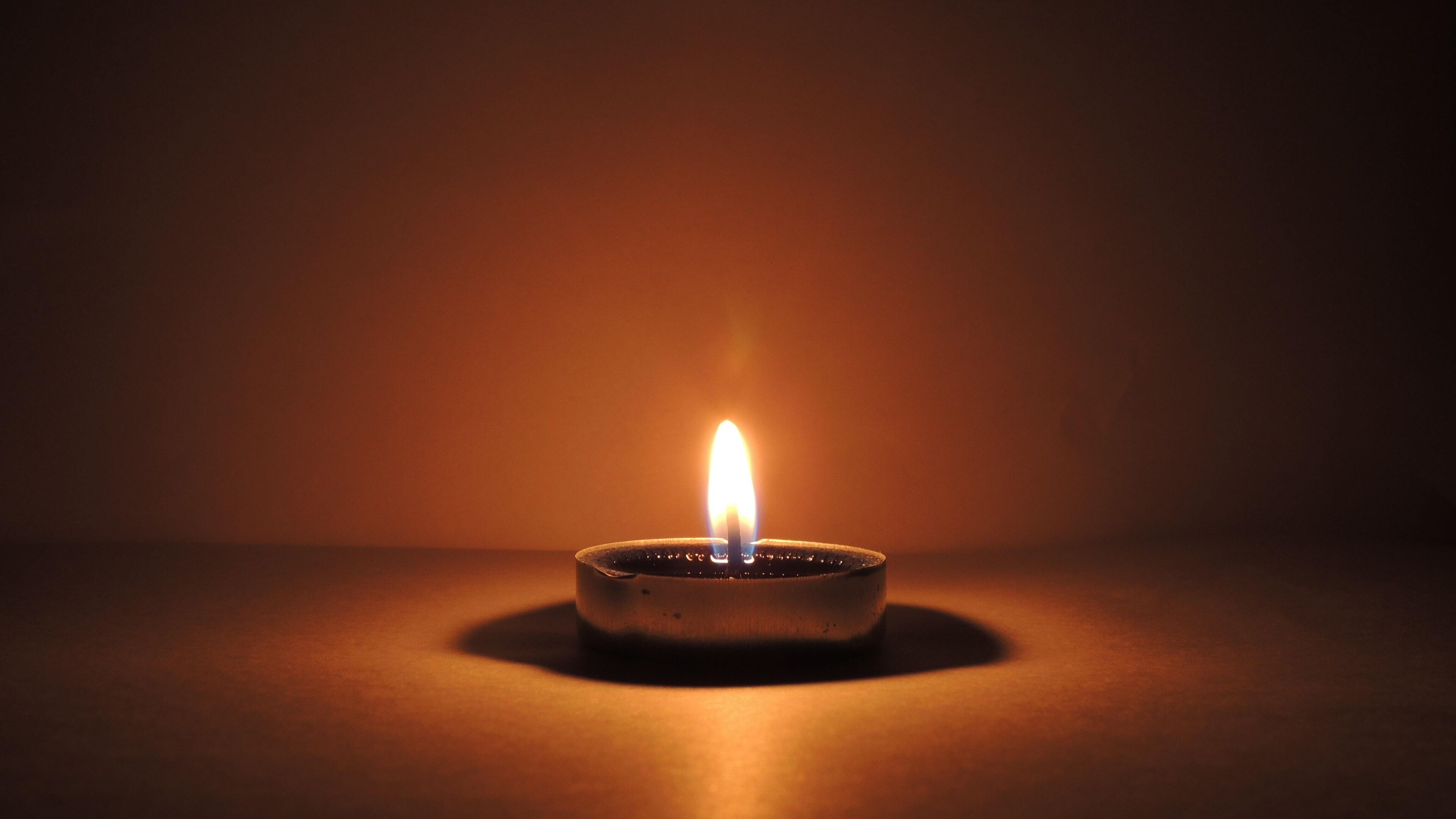
All of your awareness should be focused on the flame, to the point where awareness of the rest of the body and the room is lost. The gaze must be completely fixed on the flame.
When you’re ready, open your eyes and stare at the tip of the wick. With a lot of practice you will be able to constantly look at the flame without having to blink.
Your awareness must be focused on the flame, to the point where awareness of the rest of the body and the room is lost. If tears are produced, you continue without blinking and let these tears slide down your cheeks.
8.1.1.- The practice of looking at the Sun and the phosphenes in the Ajna Chakra
We have all looked at the Sun or a bright light, and closing our eyes for a few minutes, we have seen a clear impression on the retina of the eye. You should practice Treataka on this inner image, holding it directly in front of you, or a little above your eyebrows. Keep your eyes closed. Sometimes the phosphene is green in color and can change to a reddish color.

If you are convinced that the phosphene has disappeared or has been diluted for the last time, open your eyes and repeat the process concentrating on the external flame of the candle.
It is attractive to know that while the phosphene lasts you can introduce thoughts, ideas or images that have great power of change, to change the aspects that we want.
8.1.2.- Duration, benefits, variations and precautions
You can practice as long as time allows, but 5 to 15 minutes is the recommended time at the beginning, gradually increasing over time, until you reach 30 minutes. Two or three minutes at a time per round is enough to stare at the flame.
Mentally treat, it increases nervous stability, removes insomnia and relaxes the anxious mind.
Benefits: Trataka has many physical, mental, and spiritual. Physically, it fixes eye weaknesses and defects like myopia. When the eyes are fixed and still, the mind becomes stable and calm. Helps develop manifestation and strong willpower. Spiritually, it enlivens the Ajna Chakra.
Variations: Trataka can be performed on a small point, the full moon, the rising sun, a shadow, a crystal ball, the puna of nose, an image in the water, a Yantra, darkness, a Shivalingam and many other things. Those who have a personal divinity (such as Ganesh) can practice Trataka in that image, and those who have a Guru they can practice in their photography.
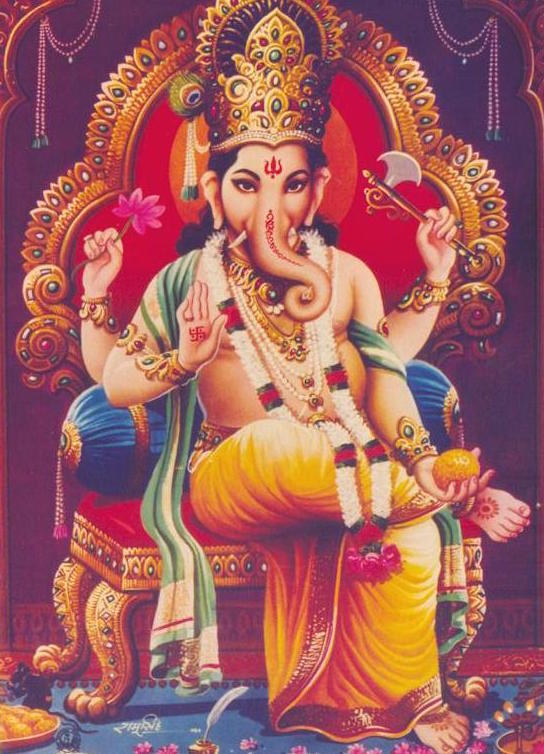
Precautions: Do not strain the eye muscles too much; when they get tired or feel slightly strained, relax with Shambavi Mudra.
8.2- Other practice methods to activate the sixth Ajna Chakra
8.2.1- Sing the Mantra Om
Sit in meditation posture with a straight back and hands above the knees, or performing a suitable Mudra, such as Jnana Mudra. Look straight ahead at a fixed point and then look up without moving your head. Focus with your eyes and concentrate on the area between the eyebrows. Make progress in suspending the process of the arising of thoughts and focus your attention on Ajna.
Repeat “Om, Om Om, …”, taking your time, with your awareness in the vibration of the sound between the eyebrows. Each Om should produce with a soft and clear voice, without forcing the voice, placing the vibration of the Mantra between the eyebrows. Each Mantra must be one or two seconds long, and must be followed, without long pauses.
8.2.2- Another way to sing the Mantra Om
Now the eyes are closed, but the inner gaze remains between the eyebrows.
Start chanting the Mantra with less speed, with total awareness in the vibration of the sound vibration between the eyebrows. Assume that the sound is being emitted from the center of the eyebrows. Gradually, and effortlesly, increases strong the duration of each Om, making it long and continuous.
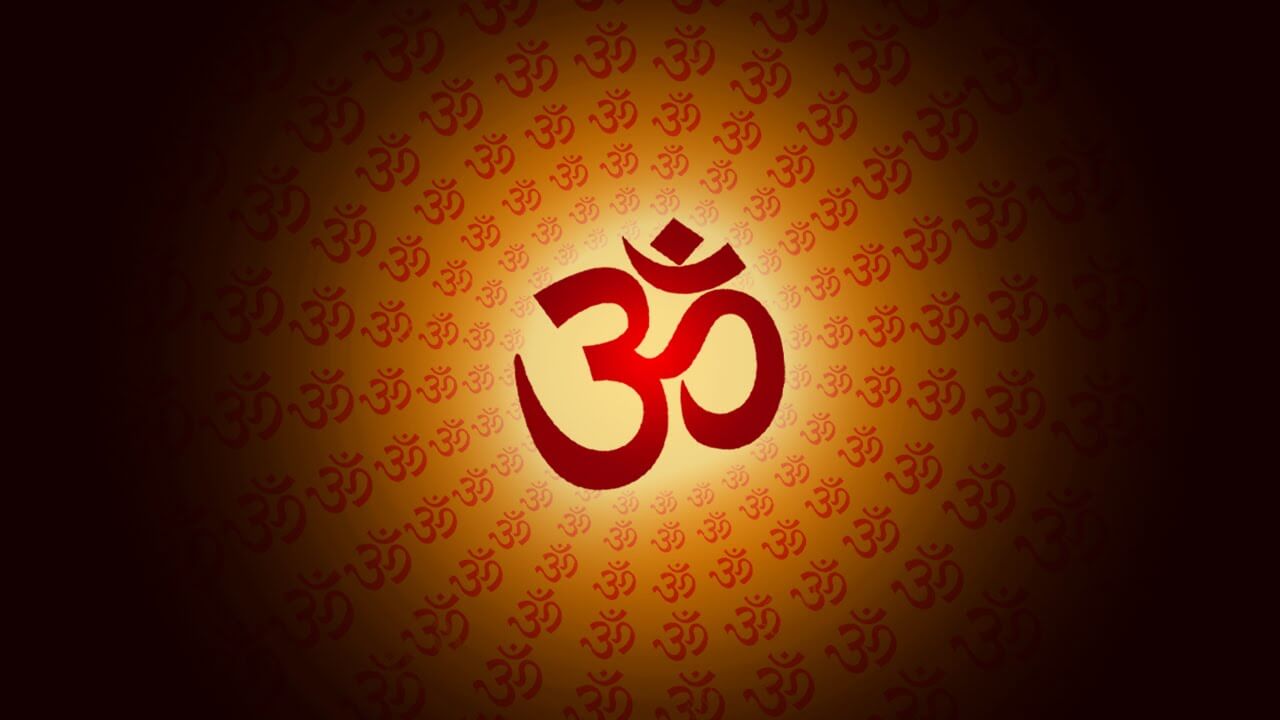
The sound should be permanent and with a similar intonation, ending with the end of the exhalation. Finally, fill your lungs body and soul again by breathing through the nose, but do not change the position of the body or the head.
